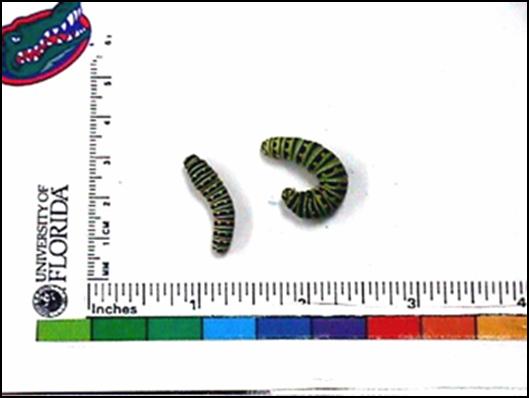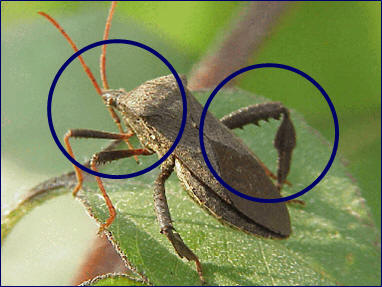Entomology
University of Wyoming Extension

Submitting a Specimen for Identification
Suggestions for Successful Photographic Identification
If possible, emailing digital photos of an unidentified insect pest can save time
and save you on mailing costs. Things to remember when considering digital pictures:
- Send only clearly focused images; brightness, contrast and hue can be corrected, but poor focus cannot!
- Use high resolution, and resize later to make files smaller (96 dpi or "best for web" size option)
- Save images in .jpg format
- Take lots of images, but only send 1-2 of the best photos of the top, bottom, and profile views of the arthropod
- Include enough background to document context, but.

Try to apply these extra tips to ensure a positive identification of the specimen:
- Include head capsule and side view with prolegs of caterpillars; mouthparts, mandibles or proboscis
- Include the host where you find the pest
- Close-ups: top, bottom and side of insect
- Life cycle stages, if available: eggs, larvae, adults, pupae, nymphs
- Damage or injury on plants, livestock, people, structures
- Signs such as webbing, exit holes, frass

If insect is found feeding on a plant, correct specimen identification may also require
an identification of the plant as well. Here are some guidelines for plant photos:
- Include parts that are key to plant ID (ligules, leaves, stems, flowers fruit and seed)
- Entire plant showing growth habit
- Close-up of the flower, fruit, upper and lower leaf surfaces showing color, shape
- Medium close-up of a branch to show arrangement of flowers, fruit, stems and leaves

To submit digital photos, please send them to insectid@uwyo.edu. An attempt will be made to make an identification sufficient for management from
the images. If that is not possible, a request to send the specimen to us may follow.
Please allow time for the response as we may be out of the office during arbitrary
times. Be sure to include other contact information so if follow-up questions are
necessary, we will be able to contact you.
 The University of Wyoming Arthropod Identification service link is part of the Great
Plains Region (GPDN) of The National Plant Diagnostic Network. The National Plant Diagnostic Network
(NPDN) will focus on the plant disease and pest aspect of the program. The network
is a collective of Land Grant University plant disease and pest diagnostic facilities
from across the United States.
The University of Wyoming Arthropod Identification service link is part of the Great
Plains Region (GPDN) of The National Plant Diagnostic Network. The National Plant Diagnostic Network
(NPDN) will focus on the plant disease and pest aspect of the program. The network
is a collective of Land Grant University plant disease and pest diagnostic facilities
from across the United States.
The mission of the network is to enhance national agricultural security by quickly detecting introduced pests and pathogens. This will be achieved by creating a functional nationwide network of public agricultural institutions with a cohesive, distributed system to quickly detect deliberately introduced, high consequence, biological pests and pathogens into our agricultural and natural ecosystems by providing means for quick identifications and establishing protocols for immediate reporting to appropriate responders and decision makers. The network will allow Land Grant University diagnosticians and faculty, State Regulatory personnel, and first detectors to efficiently communicate information, images, and methods of detection throughout the system in a timely manner. Lead universities have been selected and designated as Regional Centers to represent 5 regions across the country. Regional Centers are located at Cornell University (Northeast region), Michigan State University (North Central region), Kansas State University (Great Plains region), University of Florida at Gainesville (Southern region), and University of California at Davis (Western region). The National Agricultural Pest Information System (NAPIS) located at Purdue University has been designated as the central repository for archiving select data collected from the regions. The establishment of the network will provide the means necessary for ensuring all participating Land Grant University diagnostic facilities are alerted of possible outbreaks and/or introductions and are technologically equipped to rapidly detect and identify pests and pathogens. This will be accomplished by establishing an effective communication network between regional expertise, developing harmonized reporting protocols with the national diagnostic network participants, and cataloging pest and disease occurrence to be included in national database.

